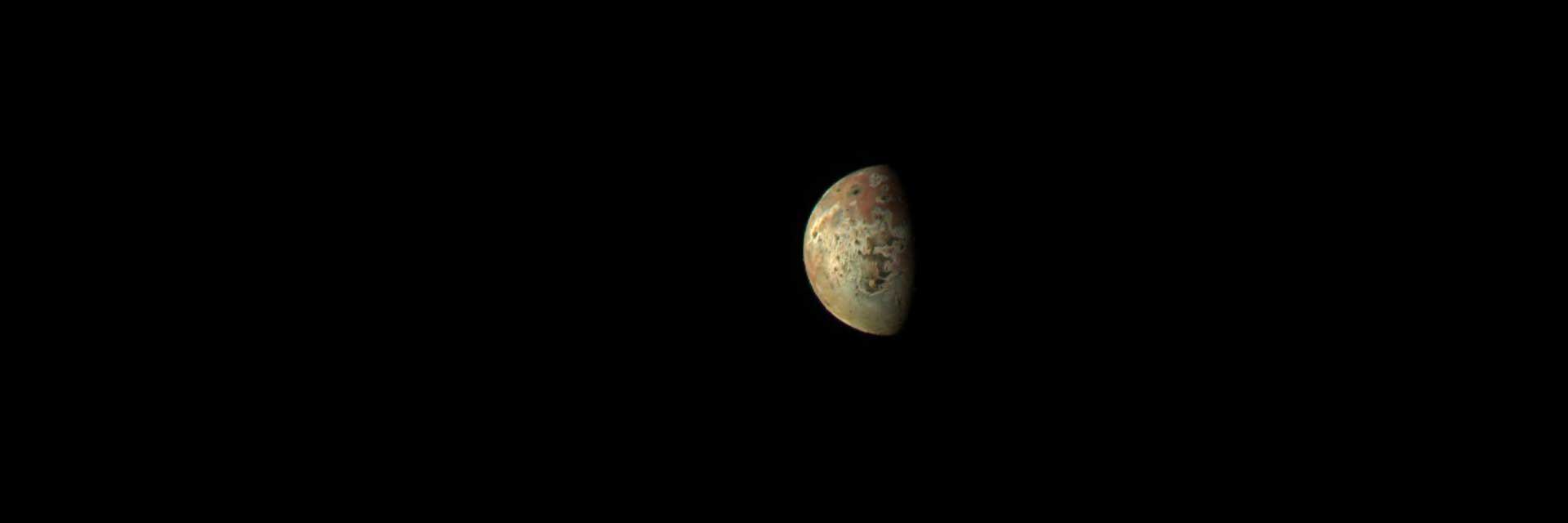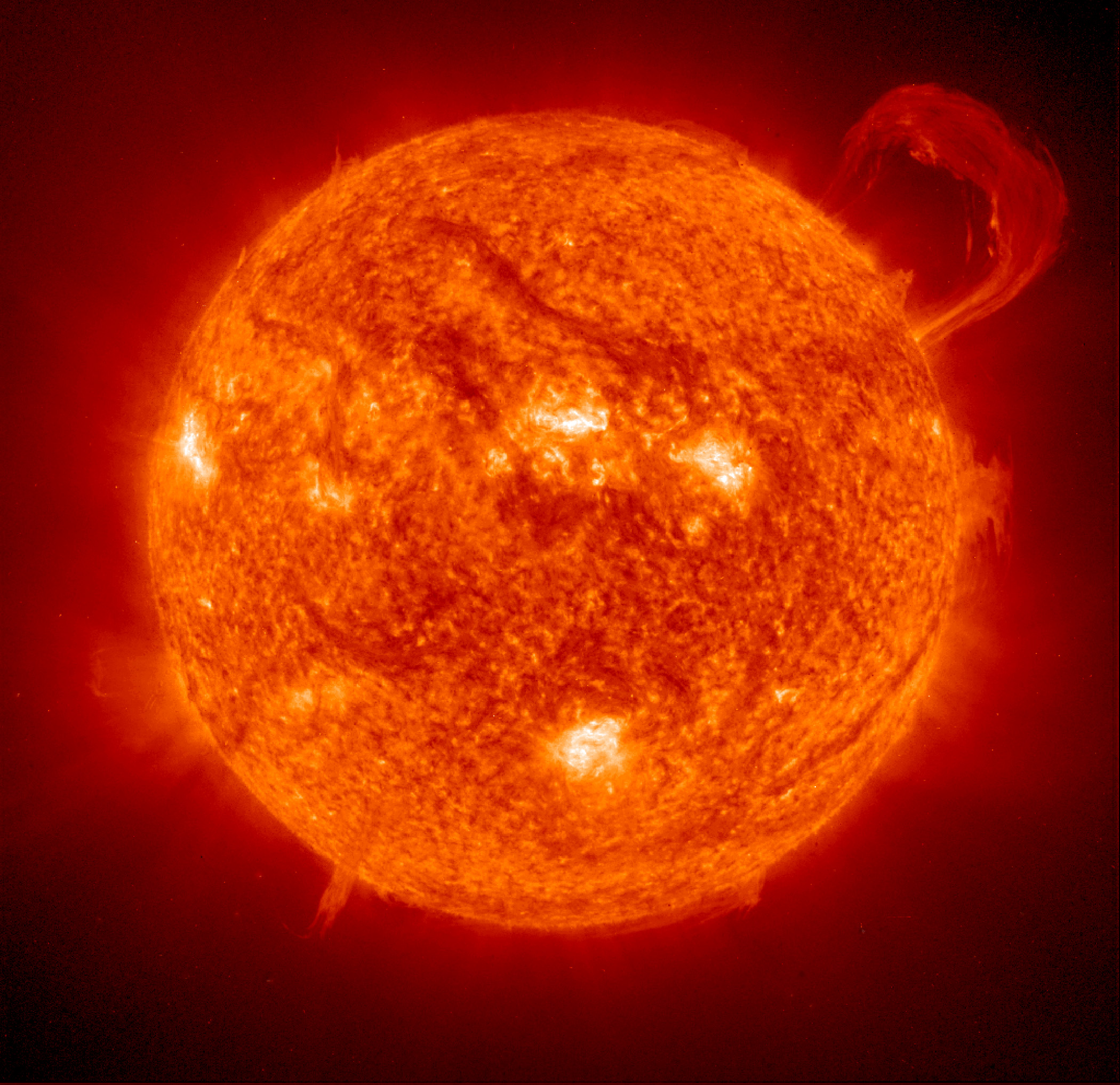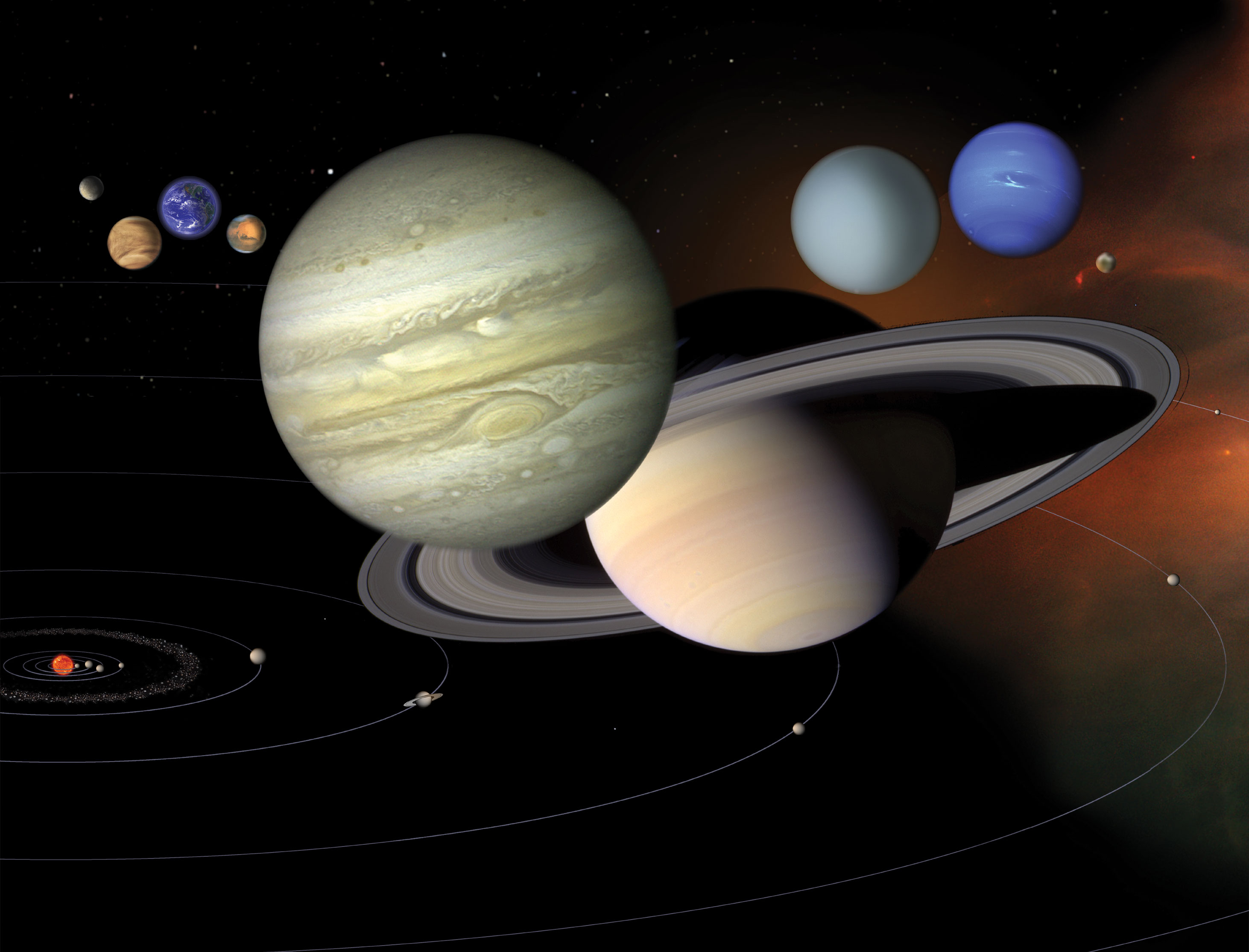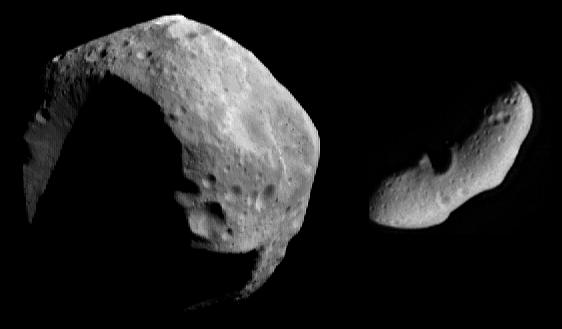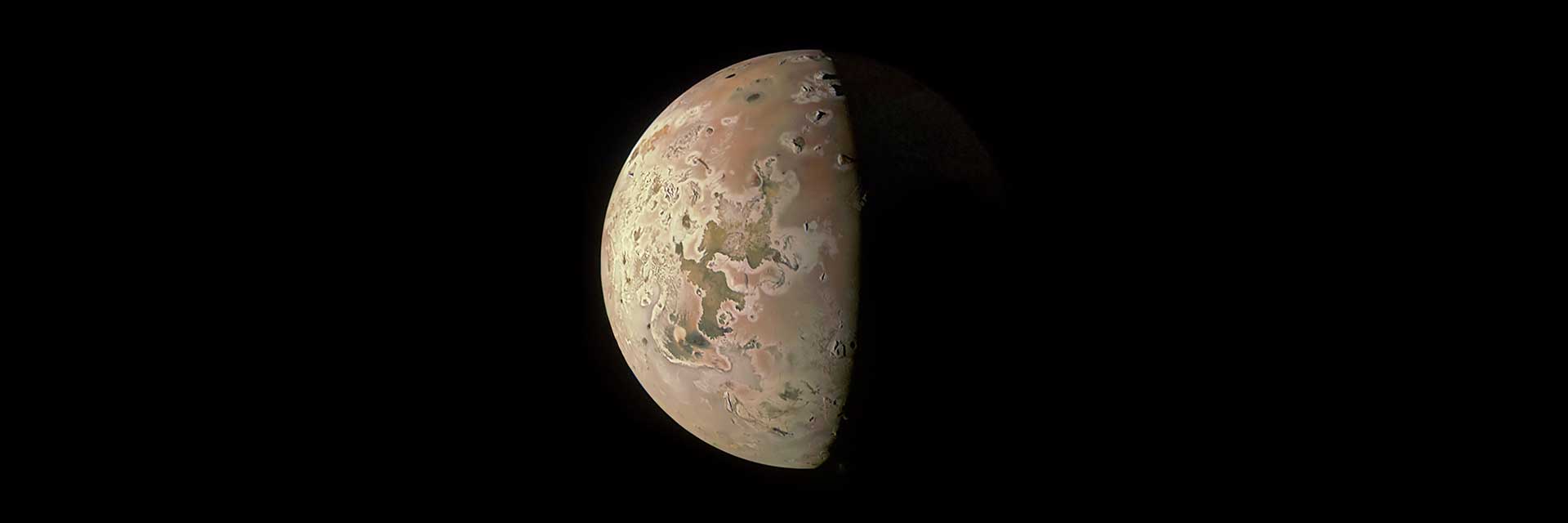
Io
Volcanic activity on this Jovian moon is so abundant, it resurfaces the face of Io with new deposits faster than comets, and asteroids can pepper it with large craters.
Moon Io Overview
Jupiter's moon Io is the most volcanically active world in the solar system, with hundreds of volcanoes, some erupting lava fountains dozens of miles (or kilometers) high. Io is caught in a tug-of-war between Jupiter's massive gravity and the smaller but precisely timed pulls from two neighboring moons that orbit farther from Jupiter—Europa and Ganymede.
Io’s volcanoes are at times so powerful that they are seen with large telescopes on Earth, and Io even has lakes of molten silicate lava on its surface. Only slightly larger than Earth’s Moon, Io is about one-quarter the diameter of Earth itself.
Pop Culture
We’re still getting to know Io, though it’s powerful volcanoes have captured imaginations since their discovery decades ago. Io plays a memorable role in the sequel to "2001: A Space Odyssey" – "2010: The Year We Make Contact" – in which astronauts make a dangerous spacewalk above Io’s volcanoes to board an abandoned spacecraft.
NASA’s Juno Gives Aerial Views of Mountain, Lava Lake on Io
Imagery from the solar-powered spacecraft provides close-ups of intriguing features on the hellish Jovian moon. Scientists on NASA’s Juno mission…
Read the Story

